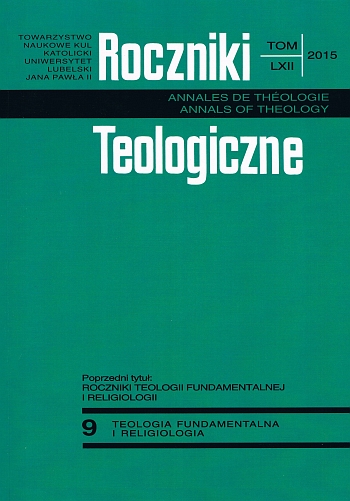Święto Matki Boskiej Gromnicznej w religijności ludowej
Feast of Our Lady of Candles in Folk Religiosity
Author(s): Zdzisław KupisińskiSubject(s): Pastoral Theology
Published by: Towarzystwo Naukowe KUL & Katolicki Uniwersytet Lubelski Jana Pawła II
Keywords: Presentation of the Lord;Feast of Our Lady of Candles;“Gromnica”;folk piety;customs;rituals and folk beliefs;folk tradition;divination;magical practices;
Summary/Abstract: The Feast of Our Lady of Candles is the later name for the Feast ofPresentation of the Lord,founded in the fourth century. Initially, the celebration had a Christological accent, but with time it acquired features of Marian feast (now in the liturgy the original name is in force). In Polish folk religiosity the name Our Lady of the Thunder Candle has functioned, as people came to church to have their candles called “gromnica” (the Thunder Candle) blessed. Under the influence of the Church's teaching, ancient folk customs and rituals have changed their content and meaning.So it was with the symbolism of light and candle.After giving it a Christian interpretation burning candle symbolizes the eternal light, which is Christ for every Christian.In the life of the villagersgromnicahad great significance and was used for various practices. It was handed to a dying person to be safelyaccompaniedby Mary to the “other world” and in the light of Christ. Aftercoming backfrom church, sign of the cross was marked with a smoky flame ofgromnicaat the frames of windows and the front door of the house to ensure God's protection from evil spirits. Gromnica waslit and placed in a window or on a table during storm to protect the house and farm fromthunder-lightand “avert” storm. This was not a magical act, as some ethnologists asserted,but a form of folk piety through the intercession of Mary (People prayed Rosary and “Beneath Thy Protection”).Gromnicawas also used for medical and meteorological practices; by observing the flame during the church service or on the way home people were makingpredications.According to the folk beliefs, candle had its power, because it was blessed in the church by the priest.Nowadays verylittle is left of the ancient folk customs associated with the Thunder Candle. Only in some families the custom of handinggromnicato the dying person or marking sign of the cross on the frames of the door and windows is still practiced. However, the candle as such and its burning flame reminds the faithful about Baptism and Christ – the eternal Light.
Journal: Roczniki Teologiczne
- Issue Year: 62/2015
- Issue No: 09
- Page Range: 191-210
- Page Count: 20
- Language: Polish

